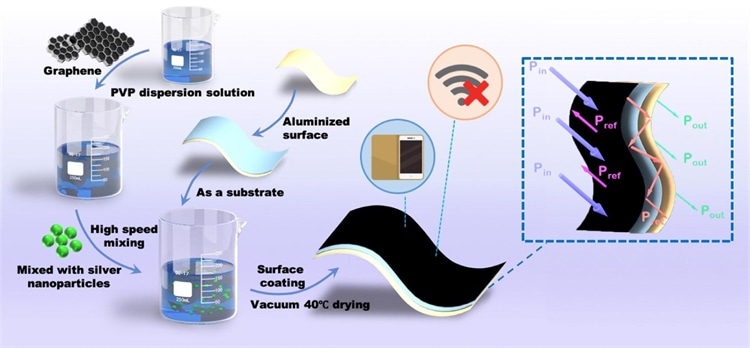An editorial distributed within the diary Materials & Plan depicts the improvement of a biodegradable electromagnetic protecting (EMS) fabric made of graphene/ silver nanocoating and aluminum film paper. With the far-reaching utilization of computerized data frameworks, challenges such as electromagnetic obstructions (EMI), data security breaches, and electromagnetic wave corruption have been created. Within the final decade, flexible electromagnetic protecting (EMS) substances, which channel or divert electromagnetic radiation, have found applications in EMS materials, smartwatches, and electrical frameworks.
Restrictions of Already Utilized EMS Materials. Elastic and plastic have long been utilized as substrates for the manufacture of electromagnetic protecting materials. In any case, the confinements of moo warm soundness and non-biodegradability anticipate them from finding far-reaching applications. Cellulose, being the foremost naturally available vitality source within the world, could be an awesome crude substance for making multi-functional composites owing to its recyclability, biosafety, and moo harmfulness. Cellulose-based substances can be utilized for radiation obstructions, covered materials, superconductors, and printed electronics. Even in spite of the fact that cellulose paper illustrates extraordinary biodegradability, warm resistance, and auxiliary steadiness, its utilize within the electromagnetic protecting industry is confined due to its destitute electrical separator. Various nanomaterials have been examined for utilization as EMS materials, counting CNTs, graphene, and silver nanowires.
A few past analysts have appeared that joining layered nanostructures into cellulose polymers is a successful strategy for moving forward their electrical properties and EMI blocking capabilities. In any case, a parcel of the cellulose filler tends to total, coming about in a diminished useful contact zone amid the layered material’s arrangement, seriously constraining the material’s electrochemical execution. Usually inconvenient to the method of planning high-performance EMS materials. The improvement of a reasonable strategy for expanding the useful contact zone of cellulose filler is basic for the generation of composite materials with predominant electromagnetic protecting impacts and warm resistance.
Manufacture of a Biodegradable Paper-Based EMS Fabric In this ponder, the analysts created a cellulose aluminum film paper with layered nanostructures to accomplish exceptional electromagnetic protecting properties. In expansion to the electromagnetic wave misfortune surface (graphene/silver nanoparticles coating), the layered composite too had a reflecting surface (aluminum film layer). When it came to the retention of electromagnetic radiation, graphene played a basic part, and the silver nanoparticles sifted into the center of the coating to create a 3D conductive heterostructure, which is supported within the quick transmission of electrons, expanding the conductivity of the material. The aluminum film surface collected electrons and vitality from the electrical conductive heterostructure and created a humble amount of transmission signals back to the graphene/AgNPs layer, boosting the material’s EMS impact and warm efficiency.
Date: Dec 8, 2021

